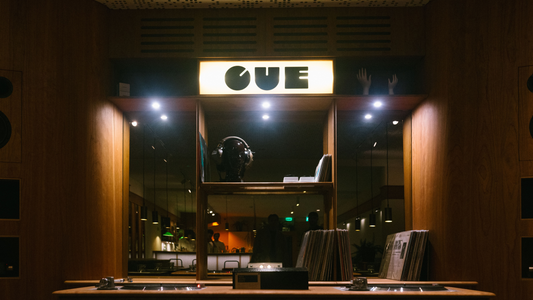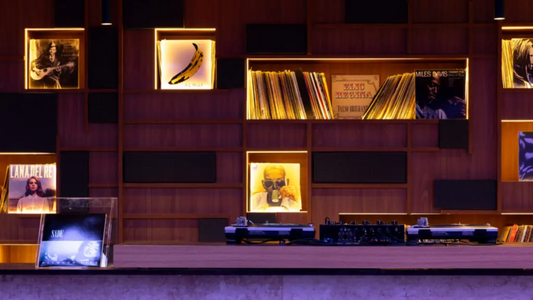
Listening in Circles
By Rafi Mercer
There are nights when a listening bar isn’t required, when the crowd, the whisky, the warm murmur of strangers are all replaced by something more private. A chair, a record, and a pair of headphones. This act, solitary and focused, might seem a lesser form of listening compared to the grandeur of horn-loaded speakers in a darkened room. Yet the headphone ritual has its own geometry, a shape that folds inward rather than outward.
Headphones are not simply miniature speakers strapped to the ear. They rearrange the way sound occupies space. A listening bar projects outward: sound pushes against walls, reflects, expands, and then enfolds the listener within a collective cloud. Headphones invert this. The room collapses into the skull, and the listener becomes the bar. Every echo, every bassline, every detail of breath is pulled into a private sphere.
This intimacy is not new. Think of Glenn Gould, the Canadian pianist, who retired from the stage in favour of studio recording. He claimed that the act of playing for tape, then listening back in solitude through headphones, allowed him to hear music as architecture rather than performance. He could hear how Bach’s counterpoint spiralled not across a room but through his own nervous system. In that sense, headphones are not a shortcut but a microscope, magnifying not volume but proximity.
There is also a tactile side to the ritual. Choosing a pair of headphones is like choosing glassware for whisky. A thin, delicate tumbler gives a different sensation to a heavy-cut crystal, even if the spirit inside is the same. So too with sound: an open-back Sennheiser breathes like linen against the ear, letting air escape, while a closed-back Focal feels like leather—concentrated, sealed, immersive. Each design creates a mood, just as ice cubes, spheres, or stones transform the pace of a drink.
At home, the headphone ritual can be amplified with small gestures. Dim the lights. Pour a measure of something contemplative—perhaps a Highland malt with smoke threaded delicately through its sweetness. Lower the needle, and let the first notes bloom not across the room but inside the head. Unlike the communal setting, you need not share the choice. You are free to drift from Coltrane to Aphex Twin, from Billie Holiday to Burial, without regard for flow or consensus. The randomness is part of the focus.
One album that particularly suits the headphone ritual is Talk Talk’s Spirit of Eden. Recorded with extraordinary patience, it moves between silence and storm, trumpet and guitar dissolving into electric haze. On speakers, it is magnificent. On headphones, it is transcendent. You hear Mark Hollis’s breath between phrases, the air around the cymbals, the way the organ swells like light through stained glass. It is music designed not for the crowd but for the soul’s private chamber.
Cinema has captured this inward turn too. In Lost in Translation, there is a moment when Scarlett Johansson walks through Shibuya with headphones on, drifting through neon crowds yet cocooned in her own soundtrack. The city becomes scenery, her listening the lens. We have all known that sensation—the way music heard through headphones transforms a street into cinema, each step falling in time with a private score.
The ritual, however, requires discipline. Just as tubes need warm-up time, headphones demand attention. They are not background; they are foreground. If you let them, they pull you away from screens, from chatter, from distraction. The trick is to lean into the claustrophobia until it becomes liberation. Once you are inside the sound, there is nothing left outside.
So what is the geometry here? It is not a square room or a round bar but a circle drawn around the self. The headphones enclose, yes, but in doing so they create infinite space inward. A paradox of containment that blossoms into freedom.
The next time the night feels too loud, or the day too fragmented, try it. Switch off the lights, pour a dram, place the cups gently over your ears. Notice the silence before the sound. And then let the record unfold inside you, as if you were the room itself.
Rafi Mercer writes about the spaces where music matters. For more stories from Tracks & Tales, subscribe here, or click here to read more.






